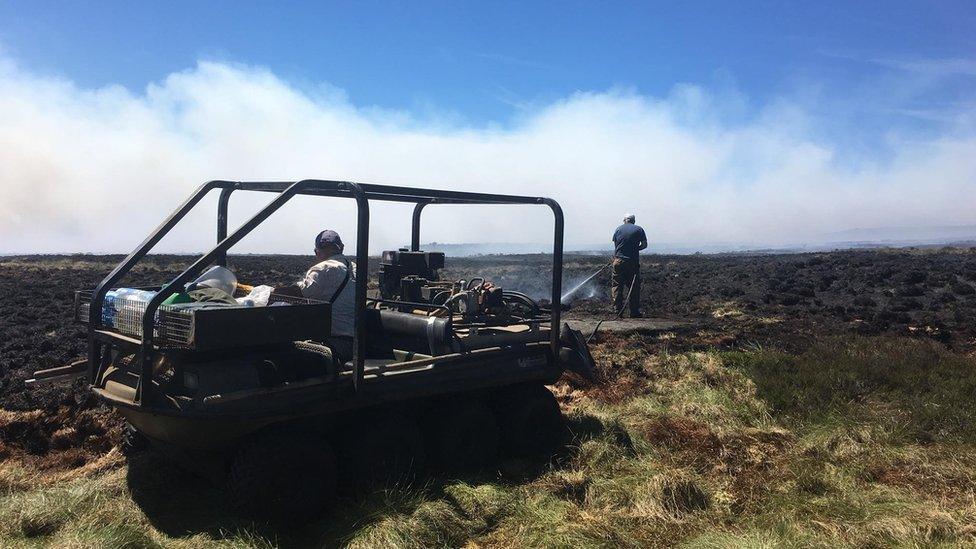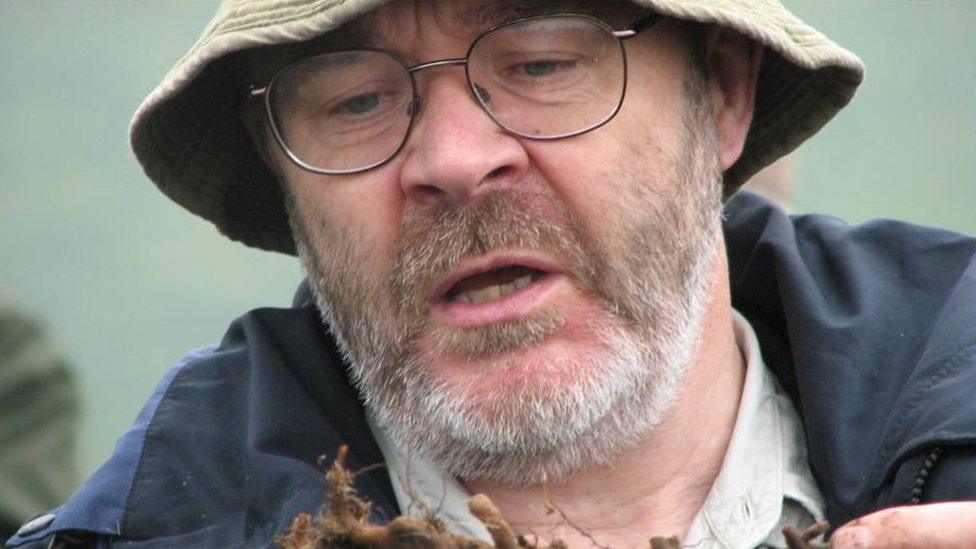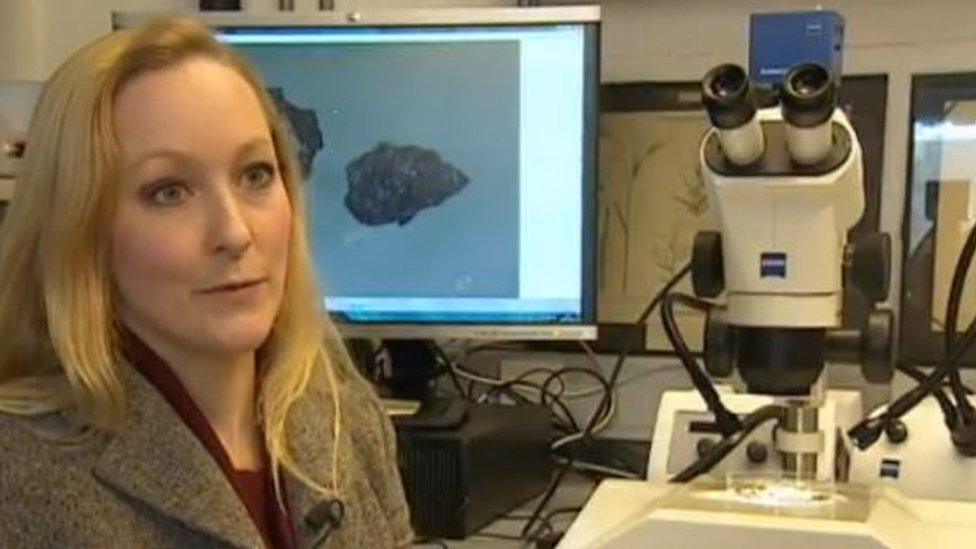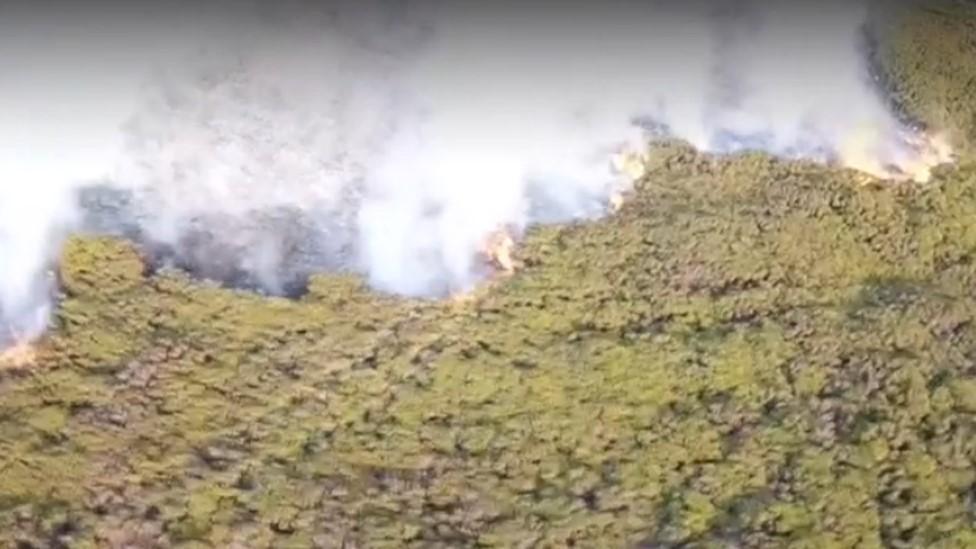Saddleworth Fire: Moorland 'needed controlled burning'
- Published

Gamekeepers from the Peak District Moorland Group have deployed specialist machinery to help bring the blaze under control
The UK could face an increase in moorland fire unless countryside habitats are managed differently, scientists have said.
As embers continue to smoulder on moorland above Manchester, academics said the land had been left vulnerable to fire by the lack of a controlled burning regime.
Controlled burning of heather is practised in other parts of the country to remove what is typically the primary fuel for moorland fires.
However, the Royal Society for the Protection of Birds (RSPB), which manages the moorland currently ablaze, said it was too early to reach any judgements about the factors which caused the fire on Saddleworth Moor to spread.

Firefighters have been tackling the blaze since Sunday
An almost unprecedented dry spell had combined with an abundance of long heather to create the perfect conditions for the fire to spread, said Rob Marrs, professor of applied biology at Liverpool University.
Prof Marrs added the fire would not have spread as easily - and would have been less likely to have penetrated the peat beneath - if the dry scrub and heather had been managed by occasional burning.
He said: "United Utilities and the RSPB didn't think a big fire like this would happen to them but I've been predicting this for 15 years.
"Leaving the land alone causes much more damage than controlled burning because there's more heather to burn so it gets hotter and spreads to the peat, which in turn spreads the fire.
"It wasn't a matter of if, but when, and that when is now."

Prof Rob Marrs is among scientists who say burning should be carried out on open moorland to stop fires from spreading during dry weather
Another advocate of controlled burning, Claire Belcher, associate professor in earth system science at Exeter University, said leaving heather to grow on the moors provided fuel for any fire to quickly take hold.
She said: "We don't think of the UK as having a flammable ecosystem, but actually heather and gorse have a lot of oils in them that mean they burn very hot and radiate that heat into the peat below.
"Controlled burning does far less damage to habitats to fires on this scale."

'Controlled burning does far less damage to habitats to fires on this scale,' according to Dr Claire Belcher
The peat under the burning heather is one of the valuable natural resources the fire crews are working to protect.
It is made of plant matter compacted over thousands of years and protected from decay by lack of oxygen.
However, once lit it can burn for months. During the prolonged drought of 1976, thousands of acres of Yorkshire moorland were destroyed by a peat fire which took a year to fully extinguish.
Peat's ability to trap carbon is regarded by many as beneficial to the wider environment as it reduces the likelihood of the carbon entering the atmosphere as emissions.
The RSPB said this was a primary reason why it did not carry out controlled burning, as it believed doing so would reduce the moorland's ability to store carbon.
It said it was committed to preserving important natural habitats for birdlife including owls, grouse and peregrine falcons.
The charity has managed the 12,355 acre Dove Stone Estate on behalf of landowner United Utilities for the past 10 years.
Pat Thompson, its senior uplands policy officer, said: "The unprecedented dry spell means there was potential for a major fire, no matter how that land is managed.
"We do see burning in other parts of the country but there's a difference of opinion and our view is that burning is detrimental to the ability of the land to store carbon."
The impact of the fire on the fragile habitat - which is home to curlew, peregrine falcons and grouse - will begin to emerge as fire crews begin to regain control.
Mr Thompson said several of the important bird species which help to draw 250,000 visitors to the reservoir each year would still be nesting.
"It's now late in the nesting season but there will still be birds with eggs and chicks nesting on the ground," he said.
"When we have had fires in the past, our teams have found the remains of bird life, but really it's too early to say what the impact will be on wildlife."
- Published28 June 2018

- Published27 June 2018

- Published26 June 2018

- Published27 June 2018
